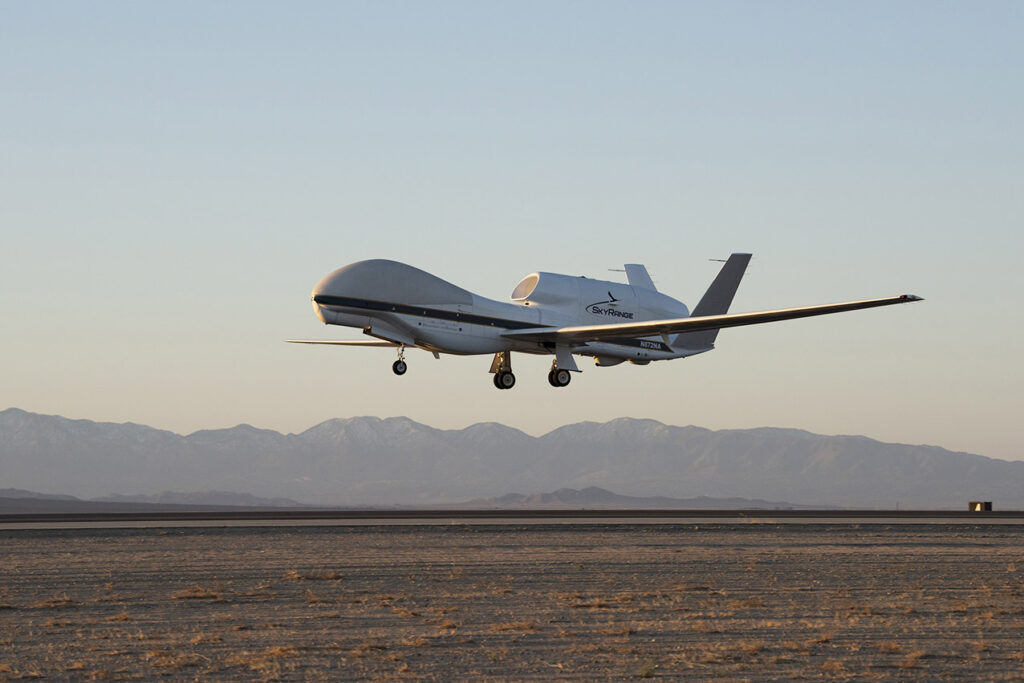Northrop Grumman RQ-4 RangeHawk Supports NASA’s Artemis Mission
EDWARDS AIR FORCE BASE, Calif., December 15. Northrop Grumman Corporation’s RQ-4 RangeHawk supported the first flight of NASA’s Space Launch System (SLS) rocket during the recent Artemis I mission. RangeHawk is part of SkyRange, the Department of Defense Test Resource Management Center’s uncrewed high-altitude, long-endurance (HALE), responsive mobile flight test initiative.

“Supporting the Artemis I uncrewed flight test is a clear demonstration of the flexibility of the RQ-4 platform,” said Jane Bishop, Vice President and General Manager, Global Surveillance, Northrop Grumman. “Our RQ-4 RangeHawks provide the combination of range, endurance and sensing capabilities needed for supporting this new era of deep space exploration.”
Shortly after the Artemis l launch and perigee raise maneuver, the uncrewed SLS rocket performed the Trans-Lunar Injection burn, which accelerated the Orion spacecraft from 17,500 mph to 22,600 mph to escape Earth’s orbit and head toward the moon. This burn occurred over the Pacific Ocean outside the field of view of NASA’s ground stations.
NASA leveraged RangeHawks to collect telemetry from the rocket and receive the health and status data it transmitted during the gap in ground station coverage. RangeHawk arrived at the data collection point in the Pacific within the appropriate time window and the Artemis TM Transmitter was transitioned to a detectable signal which RangeHawk immediately acquired. RangeHawks’ advanced telemetry collection sensors performed nominally, receiving error free signal enabling successful data collection.
RQ-4 RangeHawks are based at the NASA Armstrong Flight Research Center on Edwards Air Force Base in California and currently support U.S. hypersonic missile flight tests as part of the SkyRange program. Northrop Grumman’s family of autonomous HALE systems perform critical wide-area intelligence, surveillance, reconnaissance and targeting (ISR&T) missions.
Northrop Grumman additionally supported the Artemis I mission with the twin five-segment solid rocket boosters that provided more than 75 percent of the SLS rocket’s thrust at launch. Manufactured at the company’s northern Utah facility, the five-segment solid rocket booster is the world’s largest and most powerful human-rated solid rocket motor, producing 3.6 million pounds of thrust each. For the Orion spacecraft, the company manufactured the reaction control system tanks, environmental control and life support system tanks and solar array substrates at its Commerce and Goleta, Calif., sites.
Northrop Grumman is a technology company, focused on global security and human discovery. Our pioneering solutions equip our customers with capabilities they need to connect, advance and protect the U.S. and its allies. Driven by a shared purpose to solve our customers’ toughest problems, our 90,000 employees define possible every day.





